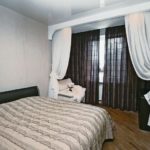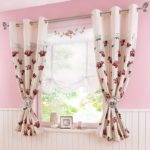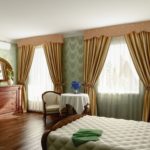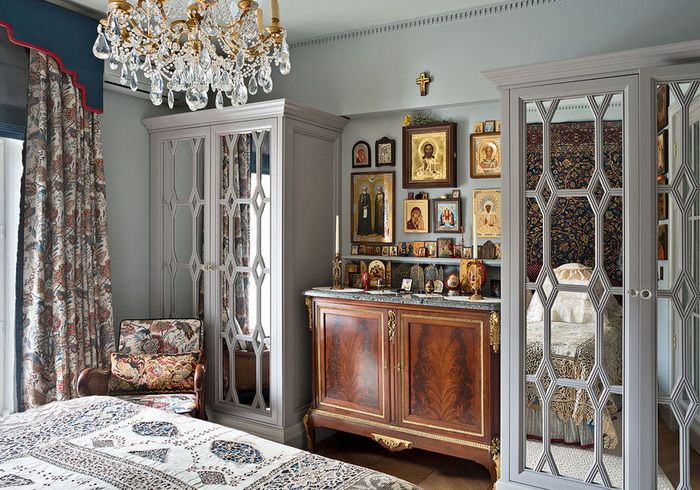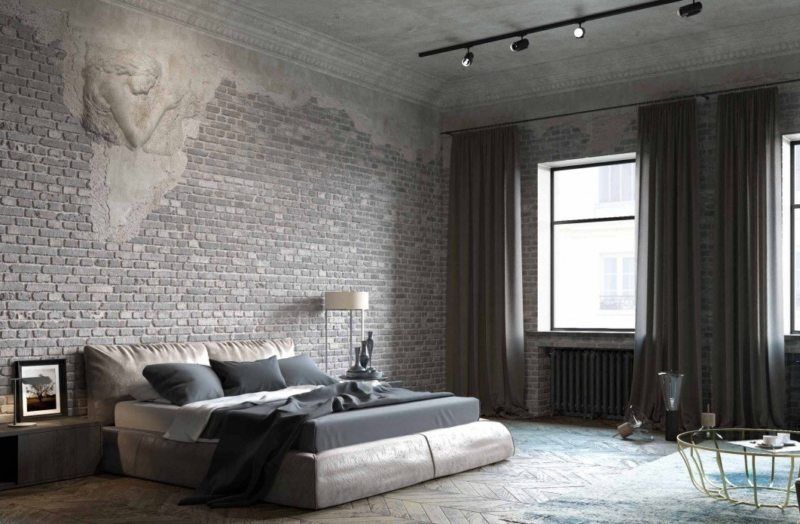Photo of curtains for the bedroom in modern design
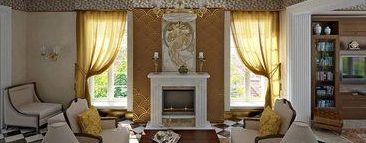 In any interior, curtains perform a double function. As a decorative element they complement the overall interior design. As protection, they are saved from sunlight and unwanted attention in the evening when the lights are on.
In any interior, curtains perform a double function. As a decorative element they complement the overall interior design. As protection, they are saved from sunlight and unwanted attention in the evening when the lights are on.
The content of the article
Modern curtain design
Modern design allows you to choose curtains of any stylistic direction. These curtains look great and highlight any interior.
Chic Art Deco
Curtains in the chic Art Deco style are considered a luxurious and exclusive option. Translated from French, “art deco” means decorative art. The style combined elements of modernism and neoclassicism. Curtains of this style are easily recognizable by their asymmetrical or uneven edges, volume and multi-dimensionality of elements. They are distinguished by a rich range of colors, a variety of textures and fabric patterns.
Reference! Art Deco chic is easily recognized by the abundance of bright colors, the simultaneous use of different materials and the abundance of golden and silver tones.
In Art Deco chic, the main emphasis is on grace and luxury. It assumes the presence of curtains that completely cover the window opening and fall to the floor. Rolls, blinds and short curtains would be out of place here.
For Art Deco curtains, artificial and natural fabrics are used: organza, taffeta, voile, silk, satin, velor, velvet, tapestry. The color combination is the most varied.The most popular: white-black-gold, chocolate-blue-pearl-silver, strawberry-silver-coffee, etc.
Attention! Modern design uses lightweight Art Deco, more restrained in color and texture.
Art Deco curtains are suitable for classic and ethnic oriental interiors (with fabric options with golden patterns and ornaments).
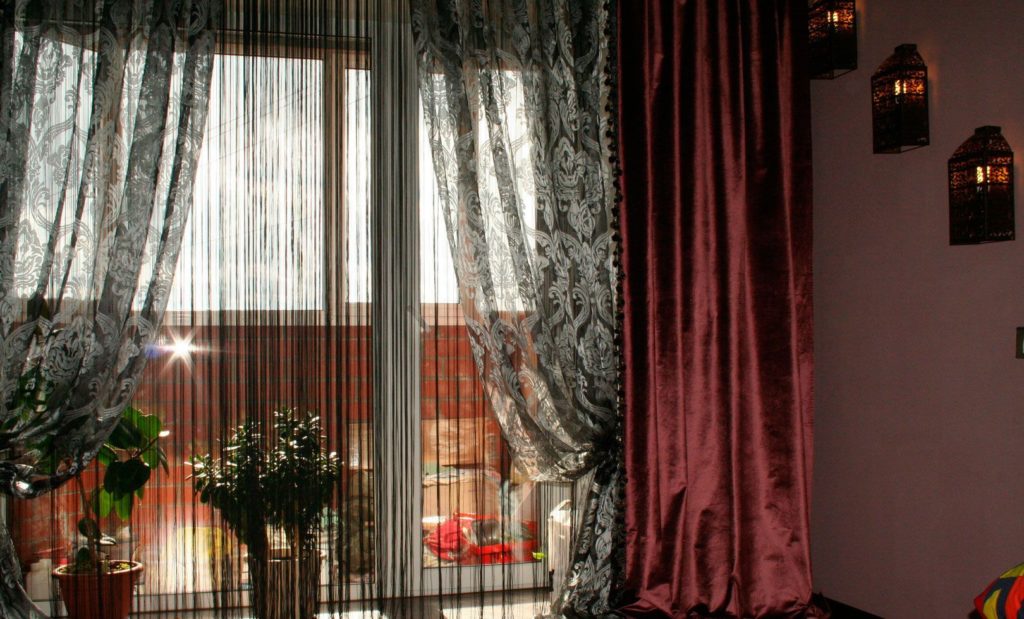
Provence
It is often referred to as French Country style. Curtains made in this style are reminiscent of similar products in French country houses of the 19th century. They create comfort, simplicity and coziness. For their production, 100% natural cotton and linen fabrics are used. Although today for the kitchen, as an exception, they use fabrics with a mixed composition of 50% + 50% (natural + synthetic) to make them easier to care for.
Provence curtains are characterized by simplicity of cut, but a rich color palette. These are fabrics mainly with floral patterns. There may be stripes and drawings with scenes from rural life. The background is usually dim: beige, gray, white.
Reference! The main difference between curtains in the Provence style is the naturalness of the material and natural patterns (flowers, berries, vegetables).
Provence curtains can be decorated with hand embroidery, lace, ruffles and garters. Modern designers offer this style most often for kitchens. The curtains consist of two simple rectangular sheets up to the window sill or just below, with a short curtain on top the width of the window.
Attention! The “cafe” style belongs to Provence, in which two canvases cover the window only from the bottom to half, and on top there is an ordinary short curtain in the form of a rectangular lambrequin.
The same style includes curtains in the shape of a bow - two rectangular strips along the height of the window, intercepted by a ribbon in the middle.
For Provence curtains, only a natural wooden or plastic “wood-like” cornice or stretched fishing line is suitable.
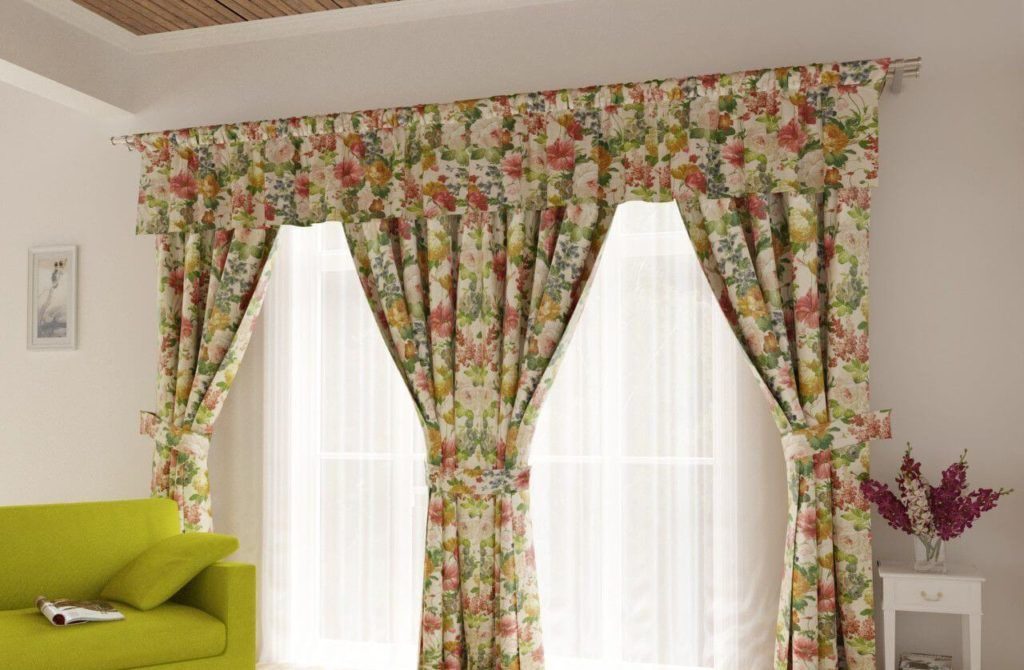
Classic
Classic curtains remain unchanged, despite changing eras and fashion. They consist of two floor-length canvases, which can be moved apart if necessary, and an upper lambrequin. Curtains are assembled using tiebacks, which perform an additional decorative function. The tiebacks are attached to the wall, holding the curtains securely.
This style is characterized by accuracy of size and proportions, traditional design, harmonious combination of colors, decorative additions in the form of braid, fringe, tassels, cords of beads or beads.
Reference! The classic set necessarily includes a curtain made of transparent fabric.
Curtains in a classic style are suitable for the living room, hall, bedroom. The variety of models is played out with soft or hard lambrequins and various tiebacks. Dense, jacquard, draped, tapestry, and velvet fabrics are used for production.
The width of the curtains is taken larger than the width of the cornice so that a large number of folds can be laid. In their absence, the beauty and volume of the product are lost.

High tech
Curtains of this style are distinguished by their severity. They are characterized by clear geometric shapes and outlines, absence of folds, pomp, and a minimal number of decorative elements.
For production, fabrics with special treatment against dust, sun, and moisture are used.These are not natural materials, but the latest developments of the textile industry, without a pattern or with a pattern in the form of geometrically regular figures, lines, engineering diagrams or with an imitation of some kind of metal structure, for example, a mesh.
Reference! High-tech fabrics are characterized by a metallic sheen and a limited range of colors.
The color palette is represented by silver, chrome, gold, bronze, copper and other metallic colors. Decorative elements include eyelets and cornices.
High-tech is used for kitchens, offices, bedrooms, living rooms, decorated in the appropriate style. These can be rectangular canvases on metal cornices or eyelets, Roman, Japanese or rolled models. As a decorative option, muslin fabrics, threads of metallic beads or glass beads are suitable.
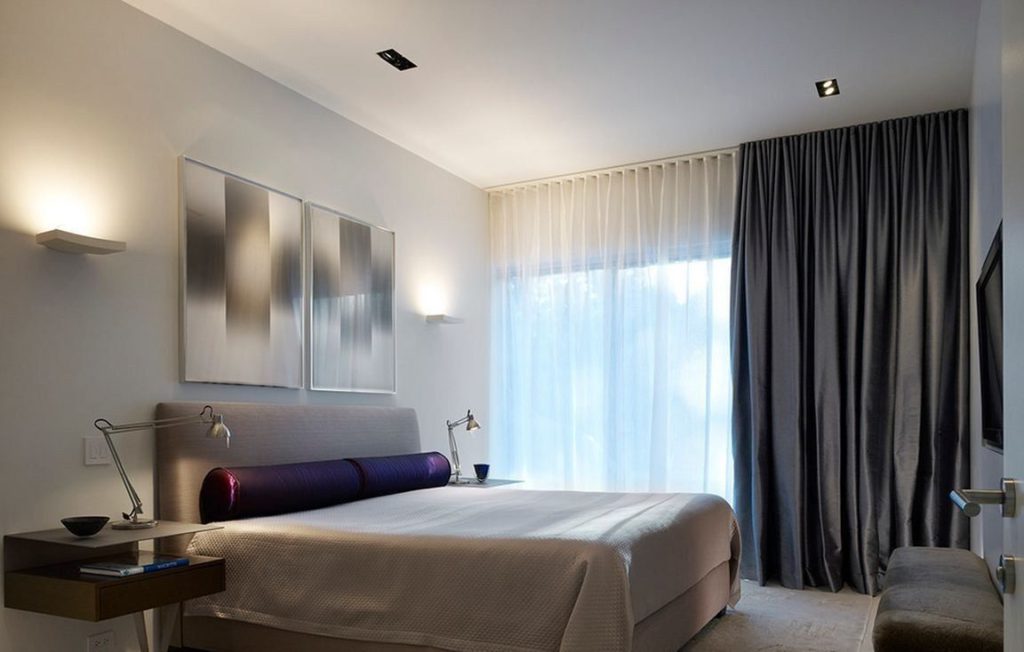
Minimalism
Curtains in a minimalist style are simple and elegant. This style is suitable for small apartments and office spaces. The goal of minimalism is maximum functionality with maximum free space. This style is constantly debated. One part of the debate believes that this style is suitable for people with a lack of funds, the other - on the contrary, that this is the embodiment of good taste.
The design of curtains of this style excludes the possibility of using folds, draperies, lambrequins, tiebacks and other decorative elements. Heavy, tapestry, draped fabrics are not used for production, as for sewing classic or Art Deco style. These can be either natural or synthetic fabrics, depending on individual preferences.Modern artificial fabrics do not differ in appearance from natural linen or bamboo, and they are impregnated with special fire-resistant, dust- and water-repellent compounds.
The color palette is dominated by pastel, light shades of brown-beige and gray tones. Darker drapes and light curtains are a typical color ensemble for minimalism.
Reference! The main feature of curtains in the minimalist style is the modest uniformity of the fabric.
This style does not use brightly colored or patterned fabrics. The most popular representatives of minimalist curtains are blinds, roller blinds, Japanese and Roman.
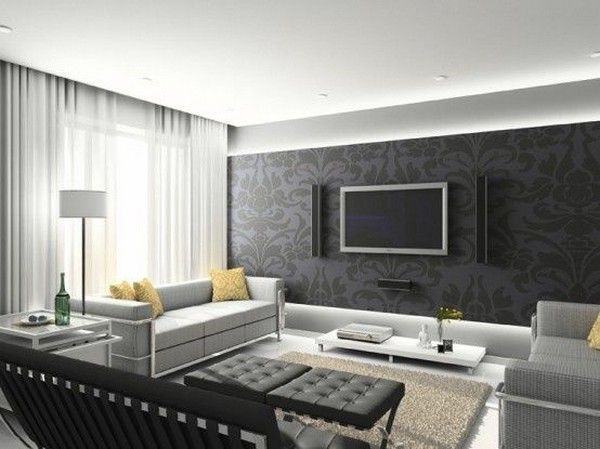
What other styles are trending?
In addition to the styles listed, there are types of curtains that have their own characteristics. The most popular of them:
- French - distinguished by the presence of many folds and beautiful drapery. Silk, organza, satin, taffeta, moiré, and cambric are used for production. Fringe and bows are used as decorative elements. A distinctive feature is the presence of folds along the entire length.
- English ones have their own special lifting mechanism and are decorated with small bows along the edges. When lifted, a beautiful fold is formed in the center of the curtain. Often used in classic interiors.
- Roman - rolled models made of natural fabrics up to the window sill. They are made in the form of wide fabric strips attached to a special folding device. An excellent option for minimalist interiors.
- Japanese - vertical canvases attached to the movable elements of the cornice. The mechanism of their movement is similar to the movement of wardrobe doors. Controlled using a remote control. Used to create minimalist interiors.
- Austrian - a combined version of French and Roman curtains. From the first they took festoons - semicircular lush folds not along the entire length, but only at the bottom. From the Roman ones - a lifting mechanism using a cord. The length of the curtains can be up to the window sill, less often - to the floor.
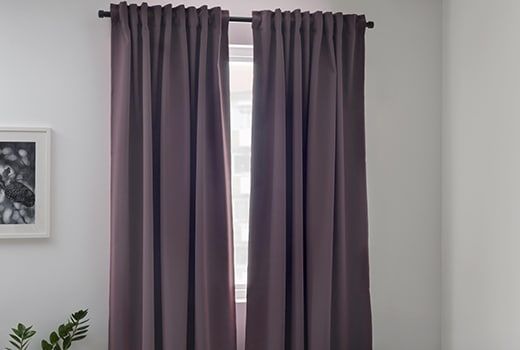
Curtains are made from taffeta, moire, tulle, chiffon, cambric, cotton, linen and other materials. Can be used in classic and other interiors. Correctly selected curtains can decorate any interior. For these purposes, you can use photos of room design, of which there are many on the Internet.

